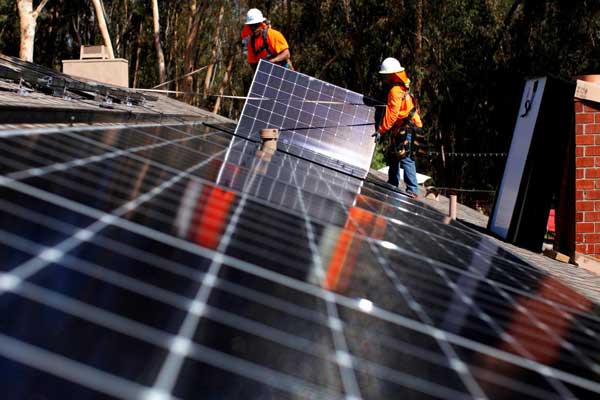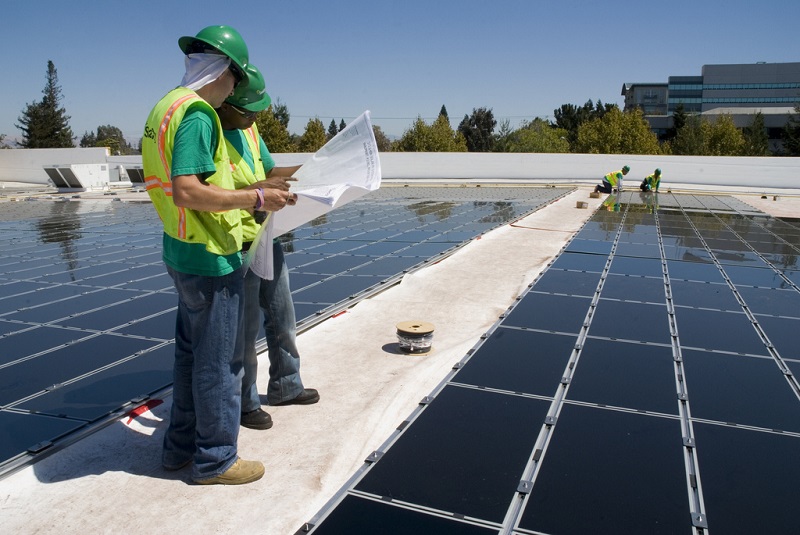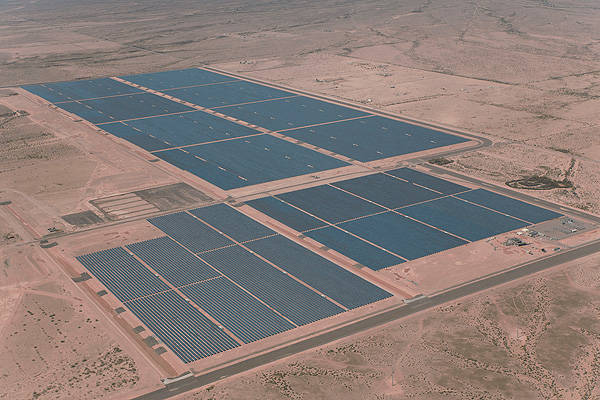In one form or another, the sun provides almost all of the energy used by humans and other living beings on our planet. But when we speak of solar power (or specifically solar PV) we are referring to electricity generated when radiant energy from the sun is converted to electrical energy through physicochemical processes in a solar panel.
The solar power industry has grown tremendously in recent years, both in leading markets like Europe and North America, but also in a large number of developing nations. The International Renewable Energy Association (IRENA), located in Bonn, Germany, reports that in 2007 the world had a little over 9 GW of solar PV installed, but in the next decade, this rose to over 400 GW!
By some estimates, solar PV looks set to quadruple by 2030, at which time it could provide 10% of global electrical demand.
The cost of solar has fallen similarly in the same period, especially the price of PV modules (panels), and the price demanded by producers is now lower than the cost of many more traditional generation technologies. Overall, according to IRENA, the cost to produce electricity from PV fell around 73 percent between 2010 to 2017.
Concurrent with an increase in solar panel efficiency, the cost of solar energy has fallen substantially. In the last decade alone, the cost of a solar panel installation fell over 60 percent, and many industry experts predict that prices will continue to fall in the years to come. (EnergySage)
Globally, a small portion of PV is providing energy for off-grid applications, usually in remote villages or facilities. The vast majority of PV installations are on the grid and occur at three main scales of application: residential, commercial, and utility-scale projects. While each scale has some distinct features, they also have a fair bit in common.
To start with the common factors, we can look at four core features of solar PV applications.
The first is that they create electricity, and where this is used to replace or offset other supply sources, the user is saving money on their electrical bill.
In many countries, schemes known as Feed-in Tariffs (FIT), along with other forms of power-purchase agreements (PPAs), offer a fixed rate for solar PV sourced electricity that is sent into the grid. In other areas a “net-metered” approach allows users to act as producers and consumers, by sending excess power into the grid and drawing from the grid when needed.
Secondly, PV is a carbon-friendly source of electricity, especially when compared to fossil fuel sources. Also, solar electricity tends to be generated at times of peak demand, when fossil fuel plants often have to be ramped up. Solar energy producers thus not only protect the environment, they save resources, including not only fuels but also water, from being consumed in other applications.
Third, solar installations have minimal maintenance costs. When properly installed, a system simply collects energy and delivers it as electricity where it’s needed, and there’s not much for the user to do but enjoy their earnings.
And they can do so for many years, since, fourth, solar systems are very durable. Many panel warranties are in excess of 20 years, and while the production tends to decline over time, most systems will still produce 80% or more of their rated capacity after 20 years.
But the systems are different, too.
Many residential systems have been installed under a FIT program, but others are net-metered or even part of off-grid systems. Residential systems are generally less than 10 kW total capacity, which provides ample supply during summer months for most households.

FILE PHOTO: Solar installers from Baker Electric place solar panels on the roof of a residential home in Scripps Ranch, San Diego, California, U.S. October 14, 2016. Picture taken October 14, 2016.
Of course, the sun isn’t always shining, so either a battery or grid backup is usually in place. Residential systems have been shown to catch on, as neighbors see them and learn about the benefits discussed above.
Commercial systems can also feed electricity into the grid but often use it on site either in net metered or behind-the-meter applications.
The commercial scale is generally from 10 kW to 1000 kW, although sometimes even larger systems that are roof-mounted, or that involve net metering, are still classified as commercial (GTM, 2013); whether these are possible will depend in local rules and restrictions.

Retail behemoth Walmart solar energy system with its total generating capacity standing at 65,000 kW, 67 percent greater than that of its nearest rival, Costco. (Credit: Walmart via Flickr)
Commercial facilities can be a great way to use unused space on the roof of a shopping mall, farm building, factory, or storage facility. They can earn money through a PPA, or simply supplement the site’s power demand, and in some cases, they can be set up to provide backup power in case of grid failure. The panels also act to block the sun from beating down on the roof, thus helping to lower cooling needs for the building.
Utility-scale solar is sometimes defined by a minimum size (which may be from 1,000 kW to 50,000 kW), and are invariably usually ground mounted. Utility-scale facilities also, by definition, sell the power they generate to the grid under some kind of PPA. Often utility-scale facilities are owned and operated by the utility itself and can help them meet mandatory GHG reduction targets.
But they don’t just provide low carbon generation, they also tend to offset the need to fire up more costly gas plants. And as the utility controls and monitors the facility, it can effectively combine the generation with storage capacity, allowing for the virtually instantaneous dispatch of energy, which is highly effective in regulating voltages and transmission, and in enabling more integration of variable renewable power.

Mesquite Solar 1 is a 150MW solar power plant located at Maricopa county of Arizona, US. The plant commenced operations in January 2013.
The relative popularity of these different scales changes with consumer preferences and utility needs, but is generally driven by the same factors that guide the industry as a whole: price and policy.
The availability of PPAs and FITs, especially, plays a key role. However, as the cost of solar output is now lower than that of many traditional generation methods, the need for special treatment has declined, and in many jurisdictions solar is solidly placed to compete in competitive auctions for grid access.












Comments